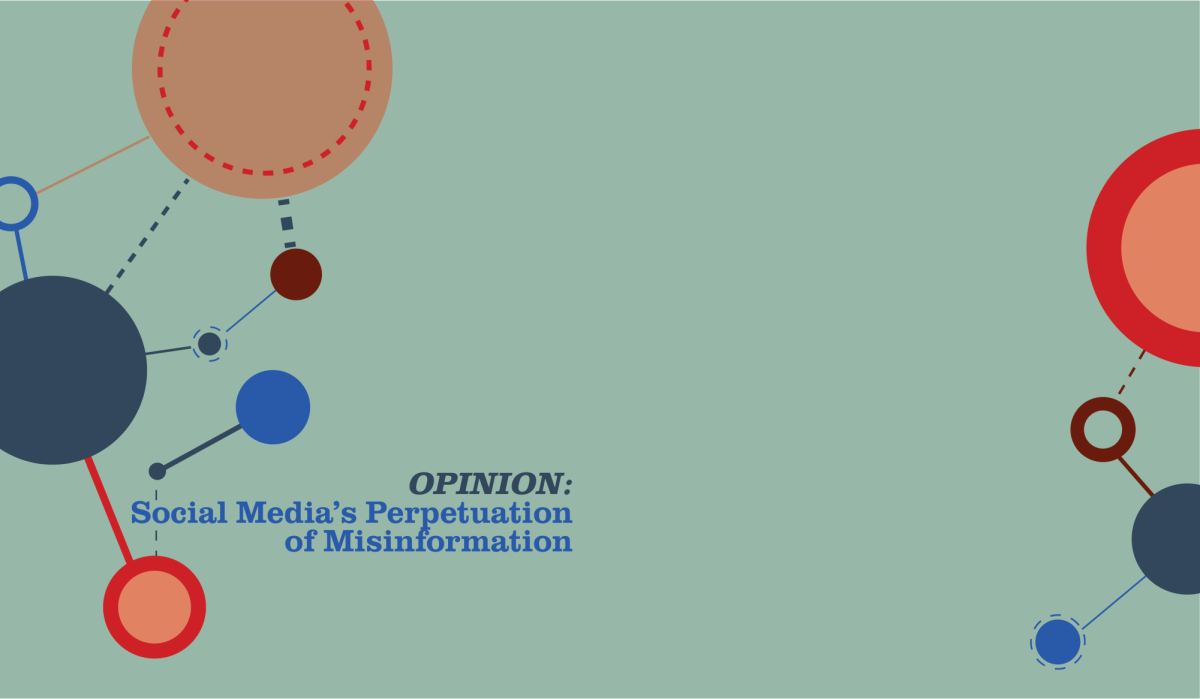This story originally appeared in the Election print issue, in stands November 2024. It has not been updated and some information may be out of date.
The 2024 election proved that staying informed is more crucial than ever. Yet, it’s increasingly difficult with the rapid spread of misinformation. Misinformation, disinformation, confirmation bias and echo chambers are reducing the reliability of social media.
Distinguishing facts is more prevalent than ever after an election between two highly polarized political parties. The perpetuation of misinformation on social media during election seasons leads to a decline in citizens seeking accurate political information, according to the Brookings Institution. The Washington Post reported that “since 2020, the number of TikTok users who say they get news on the app has almost doubled.”
Does Social Media Triumph Traditional News?
With the growth of social media, many individuals find no need to search out traditional news sources. This is a major concern because social media spreads misinformation more widely than traditional news sources. A 2018 study by MIT scholars found that “false news stories are 70% more likely to be retweeted than true stories are.”
When discussing social media and misinformation, it’s important to distinguish the difference between misinformation and disinformation. Disinformation is false information that is deliberately spread. Misinformation is the spread of false information, whether intentional or not. Many social media posts are made with disinformation. In return, misinformation spreads, causing fake news to be confused with real information.
Social media bolsters misinformation more than accurate information. Fake news receives more reposts on social media. Since misinformation receives more attention, this incentivizes content creators to post disinformation for attention, views and money.
Donald Trump directly spreads disinformation on his social media. During the election, Trump posted via X, “ANY VOTE THAT CAME IN AFTER ELECTION DAY WILL NOT BE COUNTED!” This statement is blatantly untrue. Twenty-two states accept mail-in ballots that are postmarked by Election Day, even if they arrive afterward. According to the Washington Post, “by the end of his term, Trump accumulated 30,573 untruths.”
The rise of artificial intelligence plays a significant role in the spread of misinformation in the media. Creating fake news for views is now easier than ever. Trump posted an AI-generated image of Taylor Swift endorsing him on X, further spreading misinformation. This use of fake news played a significant role in Trump’s victory. In the era of AI-generated content, it’s increasingly important to develop ways to distinguish reliable information from misinformation.
The Threat of Confirmation Bias
Social media platforms create an environment where users are primarily exposed to content that aligns with their existing beliefs. Social media fails to filter false information and doesn’t provide context beyond the content of each post. According to the Electronic Frontier Foundation, this inability to monitor content leads many people to reinforce their existing beliefs, regardless of their truthfulness.
The media repeatedly reinforces confirmation bias, especially around election season. This confirmation bias segregates political parties and worsens the partisan divide, according to Yale Insights. As a result, when people seek information, they’re likely to encounter inaccuracies or content that reinforces their confirmation bias.
Another important aspect of misinformation on social media is echo chambers. These echo chambers arise from algorithms designed to display content based on a user’s past searches and engagements. While these algorithms aim to personalize the user experience, they become problematic when it comes to important information. Social media often becomes an echo chamber that reinforces existing beliefs, making it difficult to grasp opposing viewpoints, contributing to confirmation bias. Overcoming these challenges is vital for making informed decisions during election season.
Much Needed Media Literacy
In times such as election season, the need for media literacy is more crucial than ever. The government must start enforcing and teaching American youth media literacy and how to recognize fake news. Labeling AI content is essential across all media platforms. Critical thinking skills are needed now more than ever. Absorbing content outside of social media is crucial.
Many other forms of information and media such as newspapers, books, movies and news channels exist, yet many are overlooked in the digital age. Fake news is spread by both extremist Republican and Democratic sources. This causes the political parties to polarize more and more. Distinguishing fake news will quickly help stop the partisan divide. The need for education is more prominent than ever in America.
The relationship between social media, misinformation and political polarization is increasingly complex and concerning, especially as we see the results of the 2024 election. The shift from traditional news sources to social media is overshadowing factual reporting. In the age of social media, citizens face significant challenges in accessing and distinguishing accurate information. This issue is compounded by the president-elect involvement in spreading misinformation.
By creating an environment where accurate information is valued and sought after, we can limit the risks of polarization and misinformation. The election of Donald Trump has shown us that such an environment is not being actively pursued. Education and media literacy are more needed than ever before. The election results would not have turned out the way they did if the American people prioritized seeking outside viewpoints, media literacy and education. The most powerful thing to do now as Americans is stay educated.



